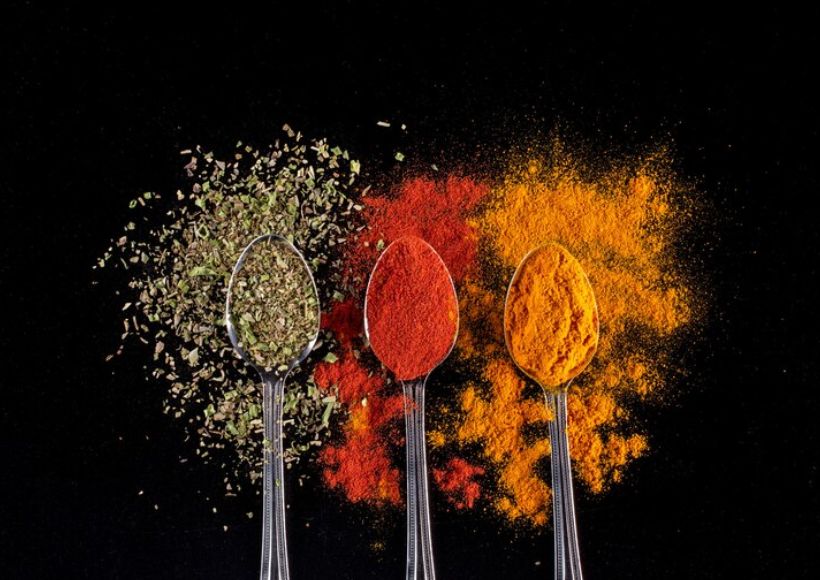The Art of Culinary Alchemy: Mastering Food flavour Balancing in Your Cooking
In the vibrant world of cooking, mastering the art of food flavour balancing is akin to conducting a symphony of tastes and aromas, harmonising diverse ingredients to create culinary masterpieces that tantalise the palate and delight the senses. From the delicate interplay of sweet and savoury to the dynamic contrast of acidity and richness, achieving the perfect balance of flavours is both an art and a science.
Understanding Food Flavour Balancing:
Food Flavour Balancing in cooking involves careful consideration of the five basic tastes—sweet, sour, salty, bitter, and umami—as well as other factors such as texture, temperature, and aroma. By skillfully combining these elements, chefs can create dishes that are not only delicious but also well-rounded and satisfying.
Examples of Possible Food Flavour Balancing Combinations:
- Sweet and Savory:
-
-
- Honey-glazed chicken thighs with a soy sauce marinade
- Fig and prosciutto pizza with a balsamic reduction drizzle
-
- Acidic and Rich:
-
-
- Creamy lemon risotto with seared scallops
- Tomato bruschetta topped with a drizzle of extra virgin olive oil
-
- Spicy and Cooling:
-
-
- Spicy shrimp tacos with a refreshing mango salsa
- Thai green curry served with a side of cucumber and mint salad
-
- Bitter and Sweet:
-
-
- Arugula salad with caramelized walnuts and dried cranberries
- Dark chocolate-covered strawberries sprinkled with sea salt
-
- Umami and Acidic:
-
-
- Grilled portobello mushrooms with a balsamic glaze
- Beef bulgogi tacos topped with pickled vegetables and kimchi
-
- Herbal and Citrusy:
-
-
- Grilled salmon fillets with a fresh dill and lemon sauce
- Rosemary-infused roasted potatoes with a squeeze of lemon juice
-
- Earthy and Nutty:
-
-
- Roasted butternut squash soup garnished with toasted hazelnuts
- Quinoa salad with roasted beets and goat cheese
-
- Creamy and Crunchy:
-
-
- Creamy mushroom risotto topped with crispy fried shallots
- Greek yoghourt parfait layered with granola and fresh berries
-
- Salty and Sweet:
-
-
- Bacon-wrapped dates stuffed with goat cheese
- Salted caramel ice cream drizzled with chocolate sauce
-
- Sour and Sweet:
-
- Pineapple chicken skewers marinated in a teriyaki sauce
- Lemon meringue pie with a tangy lemon curd filling
These food flavour balancing combinations showcase the diversity and versatility of flavours in cooking, allowing chefs to create dishes that are harmonious, balanced, and utterly delicious.
Unlocking Culinary Creativity in Food Flavour Balancing:
By mastering the art of food flavour balancing, chefs can unlock a world of culinary creativity and innovation. Whether it’s experimenting with contrasting flavours or harmonising diverse ingredients, the possibilities for culinary alchemy are endless. With practice and experimentation, chefs can develop their palate and intuition, creating dishes that captivate the senses and leave a lasting impression on diners.
- Exploring New Ingredients: Embracing culinary creativity often starts with exploring new and unfamiliar ingredients. Whether it’s exotic spices, heirloom vegetables, or artisanal cheeses, incorporating unique ingredients into your cooking repertoire can inspire creativity and innovation in the kitchen. Experimenting with different flavours, textures, and aromas opens up a world of culinary possibilities and allows chefs to push the boundaries of traditional cooking.
- Experimenting with Food Flavour Balancing Techniques: Culinary creativity flourishes when chefs experiment with different cooking techniques and methods. From sous vide and molecular gastronomy to traditional techniques like braising and grilling, mastering a variety of cooking methods expands your culinary toolkit and enables you to approach ingredients in new and exciting ways. By stepping outside your comfort zone and trying new techniques, you can discover innovative ways to elevate your dishes and surprise your diners. Here’s an amazing book on “How to cook like a pro”, this talks about Food Flavour Balancing in detail.
- Drawing Food Flavour Balancing Inspiration from Global Cuisines: Drawing inspiration from diverse culinary traditions around the world can spark creativity and broaden your culinary horizons. Exploring the flavours of Thai curries, Italian pastas, Indian spices, and Japanese sushi allows chefs to incorporate unique flavour profiles and cooking techniques into their own culinary creations. By embracing the richness and diversity of global cuisines, chefs can infuse their dishes with a sense of adventure and authenticity that captivates diners. A very nice book that we use to try recipes, you can too. World Cuisine on your plate
- Fostering Collaborative Creativity: Collaboration and teamwork can be powerful catalysts for culinary creativity. By collaborating with other chefs, food enthusiasts, and artisans, chefs can share ideas, techniques, and ingredients, sparking new inspiration and innovation. Collaborative cooking events, pop-up dinners, and chef collaborations provide opportunities for chefs to exchange ideas, experiment with new flavours, and push the boundaries of traditional cooking together.
- Embracing Seasonality and Local Ingredients: Embracing seasonality and locally sourced ingredients fosters creativity by encouraging chefs to work with the freshest and most flavourful ingredients available. By highlighting seasonal produce, seafood, and meats, chefs can create dishes that celebrate the natural rhythms of the seasons and showcase the vibrant flavours of local ingredients. Embracing seasonality not only enhances the flavour and quality of dishes but also promotes sustainability and supports local farmers and producers.
- Encouraging Playfulness and Curiosity: Culinary creativity thrives in an environment of playfulness and curiosity. By approaching cooking with a sense of experimentation and curiosity, chefs can embrace the unexpected and explore unconventional flavour combinations and cooking techniques. Encouraging a playful attitude in the kitchen allows chefs to take risks, make mistakes, and ultimately discover new and exciting culinary discoveries.
Unlocking culinary creativity is an ongoing journey of exploration, experimentation, and discovery. By embracing new ingredients, techniques, and inspirations, chefs can push the boundaries of traditional cooking and create dishes that are not only delicious but also innovative and memorable.
We have written earlier on Essential Culinary Basics for Home Chefs, do read the blog once.


